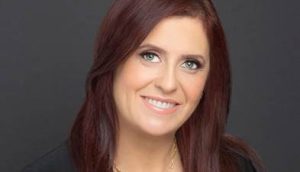On Sunday night, Academy Awards host Ellen DeGeneres broke the record for the most retweeted photo ever, posting a selfie taken by Bradley Cooper during the broadcast of the show using a Samsung Galaxy Note 3.
While seemingly spontaneous, the photo opp was said to be part of a $20 million sponsorship from the brand in the Oscars broadcast, with DeGeneres using a Galaxy Note 3 after deciding she wanted to take photos during the show, according to an article on the Wall Street Journal.
To get their thoughts on the sponsorship, what worked, and best practices for future integrations, MiC asked Harvey Carroll, CEO, IPG Mediabrands Canada, Veronica Holmes, president of digital at ZenithOptomedia, Sheri Metcalfe, senior VP and co-managing director and Lauren Richards, principal, Pollin8 to weigh in.
What elements made the Samsung product placement at the Academy Awards work?
Carroll: The placement was an exceptional example of product integration. The integration had incredibly high profile as evidenced by the Twitter performance of the celebrity selfie, while at the same time it seemed surprisingly natural. There was no huge Samsung logo or awkward moment. The executions were fun and well integrated into the flow of the program. This benefits the brand from a credibility standpoint. At the same time, it led to the other celebrities (outside of Ellen) getting involved in a way that would have been difficult, if not impossible to orchestrate had the moment seemed forced.
Holmes: What was amazing to me is the visibility the brand had during the actual telecast with Ellen walking around with the phone, showing how it is part of her life even though it is a bit of a ham up. I thought that was amazing and I didn’t think you could buy that, quite frankly.
Metcalfe: The Samsung placement used all the best practices, it tweeted against something cultural and something that made live viewing a big part of its success. And that’s part of what made the concept so strong.
One commentary I saw said the success was relying largely on Ellen to make it come alive and I truly believe she did just that. I sort of felt like – wow I’m part of this momentary cultural thing. I understand the phrase “…if only Brad’s arms were a bit longer.”
Richards: Absolutely one of the most important, if not the most important aspects of successful product placement is the natural integration of a product into the relevant situation at hand. The typical consumer, and the intended consumer, should be relatively unaware of the situation or it should be additive. And, I’d like to add, Ellen is a master of doing product-placement on her show. She dared to go where others hadn’t quite a long time ago. And without backlash or criticism. It’s all about the execution.
What could have been improved?
Carroll: I think it would have been hard to improve on this execution. It was an excellent example of all the right elements falling into place. I think Samsung, like all brands, would have loved to have the actual brand mark even more front and centre (for those not as familiar with the product) but the reality is in doing this it likely would have compromised the overall success of the execution. I can only assume that they are thrilled with the impact the placement had.
Holmes: That she was using an iPhone during breaks in the telecast was unfortunate, but that’s the kind of detail you need to look at. It is so important to consider all of those touch points. She took that brand and made it hers during the telecast and to let it slip that it isn’t actually her brand of choice was unfortunate. But I could clearly see it was a Samsung, she used the name of the brand and got people to jump up and be part of that selfie. It was absolutely stunning.
Richards: It was interesting to see that even a product placement pro like Ellen, could be easily caught out by social media today. She was immediately panned for using her iPhone for personal tweets backstage (or one of her people on her behalf) in addition to Samsung. You’ve got to be fully true to the opportunity. That was a very unfortunate and inappropriate oversight.
What are a couple best practice rules for the (inevitable) imitations that will come out in the next few months and for product placements in general?
Carroll: Brands will need to continue to find opportunities to have the products integrated in ways that provide the impact they are looking for but at the same time feel natural and appropriate enough to be accepted as part of the content and not an attempt to hijack it.
Brands need to accept that there is a balance and resist the urge to push their exposure to the limit so much that they inadvertently undermine their own efforts.
Content owners will also have to be increasingly mindful of protecting their sponsors and ensuring the placements do not infringe on the rights of those directly funding/supporting the broadcasts. I am sure Pepsi (as a sponsor) was not happy about the prominent Coca-Cola logo on the pizza box in Ellen’s pizza delivery bit, for example.
Holmes: Clarity on the key messages was pretty good. It is clear that the discussion pre-telecast included ideas on how to activate. Getting the talent involved ahead of time is critical and making sure they are on-side and ensuring they know how to use the product. Getting the points in the contract to ensure they are integrating fully, Samsung was already paying a lot of money for the sponsorship and a bit more might have closed the deal so she wouldn’t use her iPhone during the breaks.
Richards: Scalability of a concept is the price of entry. Integrity to the brand must be present throughout the activation and making sure the concept is entertaining are the first few thoughts that come to mind.























